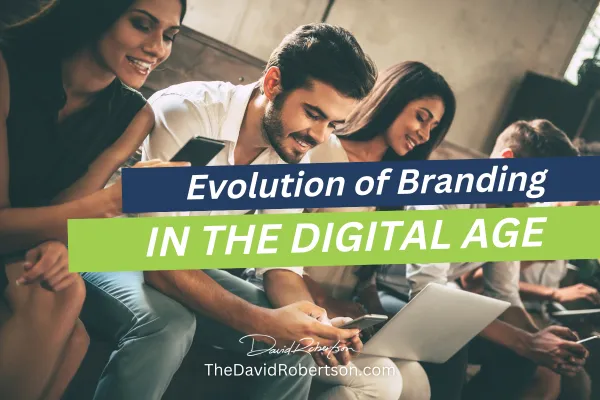
The Evolution of Branding in the Digital Age
In today's fast-paced digital world, the evolution of branding has been nothing short of revolutionary. As a business leader I’ve navigated the changing tides of marketing strategies, I have witnessed firsthand how online platforms have reshaped the essence of branding over the years. This transformation is not just about technology; it's about a fundamental shift in the way businesses connect with their audiences.
The Traditional Branding Landscape
Traditionally, branding was a game of visibility and repetition. Brands aimed to imprint their logos, slogans, and messages in the minds of consumers through repetitive advertising across media like television, print, and radio. This approach was often one-way communication, with limited feedback from consumers. Brand narratives were more controlled, curated, and, frankly, predictable.
Enter the Digital Age
The advent of the internet, followed by the explosion of social media, turned this model on its head. Now, branding is no longer just about broadcasting a message; it's about engaging in a conversation. Digital platforms have democratized brand building, allowing even small businesses to reach vast audiences with minimal investment.
A New Definition of Branding
In this digital era, branding is increasingly about building relationships and communities. It's not enough to just be visible; brands must be personable, relatable, and engaging. The focus has shifted from telling consumers what a brand is to showing them what it stands for through interactions, content, and value-driven engagement.
The Power of Data
One of the most significant changes is the role of data. As a CEO, I've seen how data analytics have become a goldmine for understanding consumer behavior. Digital platforms offer a wealth of data that can be analyzed to tailor branding efforts more precisely to target audiences. This data-driven approach allows for a more personalized and effective branding strategy.
The Rise of User-Generated Content
User-generated content (UGC) has become a pivotal aspect of digital branding. Customers now play an active role in shaping brand narratives through reviews, social media posts, and other forms of online engagement. This shift has made authenticity and transparency core components of successful branding.
Speed and Agility
The digital age demands speed and agility in branding strategies. Social media trends can change in a blink, and brands must be agile enough to adapt quickly. This dynamism is a double-edged sword; it offers the opportunity to be relevant and topical but also requires constant vigilance and adaptability.
Global Reach, Local Touch
Digital platforms have removed geographical barriers, allowing brands to reach global audiences. However, this global reach comes with the need for a localized approach. Understanding and respecting cultural nuances is crucial in crafting a brand message that resonates across different regions.
The Challenge of Differentiation
In a world where consumers are bombarded with endless choices, differentiation has become more challenging. Brands need to carve out unique positions in a crowded digital marketplace. This requires innovative thinking, not just in terms of products and services but in how a brand communicates its unique value proposition.
Ethics and Responsibility
Digital branding also brings an increased focus on ethics and social responsibility. Brands are expected to not only be profitable but also be mindful of their societal impact. This includes everything from ethical advertising practices to corporate social responsibility initiatives.
The CEO’s Role in Digital Branding
As CEOs, our role in this digital branding landscape is multifaceted. We must be visionaries, guiding our brands through this ever-changing terrain. We need to foster cultures of innovation, encouraging our teams to experiment and embrace new digital strategies. Most importantly, we must be the custodians of our brand's core values, ensuring that every digital interaction reflects what our brand stands for.
Conclusion
The evolution of branding in the digital age is an ongoing journey. It's an exciting, sometimes daunting, landscape that requires continuous learning and adaptation. As leaders, our challenge is to harness the power of digital platforms to build brands that not only stand out but also stand for something meaningful. In this dynamic digital world, the brands that succeed will be those that remain true to their core values while skillfully navigating the digital currents.
David Robertson is a Private Equity Investor, Speaker, and Business Mentor to CEO's around the world. He writes at TheDavidRobertson.com, a platform dedicated to helping business leaders navigate the complexities of growing a company in today's business environment.
